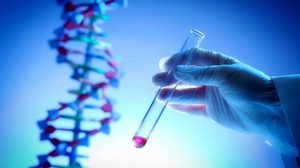Aplastic anemia is a condition that occurs when the body does not produce enough blood cells.
Understanding
It is a condition that occurs when the body does not produce enough blood cells. Aplastic anemia can cause a person to experience excessive fatigue with a higher risk of infection and uncontrolled bleeding.
As a rare and serious condition, aplastic anemia can occur at any age. It can occur suddenly or slowly, and get worse over time. Treatment for aplastic anemia may include medication, blood transfusions, or a stem cell transplant, also known as a bone marrow transplant.
Reason
It occurs when there is damage to the bone marrow that slows or stops the production of new blood cells. Bone marrow is a material with a consistency resembling and red in color, which is found on the inside of bones and functions to produce stem cells, which produce various other cells.
Stem cells found in the bone marrow produce blood cells, namely red blood cells, white blood cells, and platelets. In aplastic anemia, the bone marrow is classified as aplastic (which means it doesn’t contain) or hypoplastic (which contains only a few cells).
There are several factors that can temporarily or permanently cause bone marrow injury and affect blood cell production, including:
- Radiation treatment and chemotherapy. This type of treatment can help kill cancer cells, but sometimes it can also damage healthy cells, including stem cells found in the bone marrow. Aplastic anemia can be a side effect of this medication.
- Exposure to hazardous chemicals. Exposure to hazardous chemicals, such as those used in some pesticides and insecticides, can cause aplastic anemia.
Anemia caused by these causes can be improved by avoiding exposure to the chemical that first caused the disease.
- Use of certain drugs. Some medications, such as those used to treat rheumatoid arthritis or certain antibiotic treatments, can cause aplastic anemia.
- Autoimmune disease. Autoimmune diseases, in which the body’s immune system can attack healthy body cells, can also involve stem cells found in the bone marrow.
- Viral infection. Viral infections that affect the bone marrow can also play a role in the development of aplastic anemia in some people. Viruses that have been associated with the development of aplastic anemia include hepatitis virus, Epstein-Barr, cytomegalovirus, parvovirus B19, and HIV .
- Unknown factor. In quite a lot of cases, doctors have difficulty identifying the cause of aplastic anemia. This condition is known as idiopathic aplastic anemia.
It is a disease that is quite rare. Several factors that can increase the risk of this condition are:
- Treatment with high doses of radiation or chemotherapy for cancer
- Exposure to hazardous chemicals
- Use of certain drugs
- Presence of certain blood diseases, autoimmune diseases, or other serious infections
Aplastic Anemia Symptom
Signs and symptoms of aplastic anemia can include:
- Fatigue
- Hard to breathe
- Fast or irregular heartbeat
- Pale skin
- Frequent or recurring infections
- Easily bruised
- Prolonged bleeding
- skin rash
- feeling dizzy
- Headache
It can progress slowly over weeks to months, or it can appear suddenly. In very severe aplastic anemia, this condition can be life-threatening.
Diagnosis
It can be determined based on a detailed medical interview, direct physical examination, and certain supporting examinations. To diagnose aplastic anemia, your doctor may recommend:
- Blood test. In general, levels of red blood cells, white blood cells, and platelets are within a certain range. The doctor can suspect the presence of aplastic anemia if the three types of blood cells have very low numbers.
- Bone marrow biopsy. To confirm the diagnosis, a bone marrow biopsy can be performed.
In this procedure, the doctor uses a needle to remove a small sample of bone marrow from a large bone in the body, such as the pelvis. The bone marrow sample is then examined under a microscope to rule out other blood diseases.
In aplastic anemia, the bone marrow contains fewer blood cells than normal
When someone has been diagnosed with aplastic anemia, further tests may be needed to determine the underlying cause.
Handling
Treatment for aplastic anemia includes observation for mild cases, blood transfusions, and treatment for moderate cases, or bone marrow transplantation which is considered severe. Severe aplastic anemia, in which the blood cell count is dangerously low, can be life-threatening and requires immediate hospital treatment.
Treatment for aplastic anemia generally includes:
- Blood transfusion. Blood transfusions can be done to control bleeding and treat symptoms of anemia.
Blood transfusions are not a treatment that cures aplastic anemia. However, this procedure can treat signs and symptoms by supplying blood cells that are not being produced enough by the bone marrow.
The transfusion given can include red blood cells or platelets.
- Stem cell transplant. Stem cell transplantation to build bone marrow with donor-derived stem cells may be beneficial for individuals with severe aplastic anemia.
A stem cell transplant, which may also be referred to as a bone marrow transplant, is generally the type of treatment of choice in people who are relatively young and have a compatible donor, often a sibling.
- In people who cannot have a bone marrow transplant or who have aplastic anemia due to an autoimmune disease, treatment may include medications that alter or suppress the immune system.
- Bone marrow stimulation. Certain medications, such as colony-stimulating factors, can help stimulate the bone marrow to produce new blood cells.
- Antibiotics or antivirals. Experiencing aplastic anemia can make the immune system weaker. People with this condition generally have fewer white blood cells to fight germs, which makes them more susceptible to infection.
In people with severe aplastic anemia, doctors may consider giving antibiotic or antiviral treatment if deemed necessary.
Prevention
In general, there is no effective prevention method for most cases of aplastic anemia. Avoiding exposure to insecticides, herbicides, organic chemical fluids, paint removers, or other hazardous substances can reduce the risk of developing the disease.












Add Comment